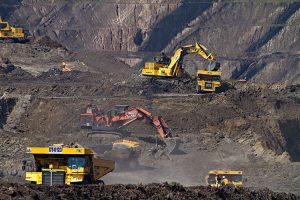Mining and Silica Exposure
On Aug. 29, the Mine Safety and Health Administration (MSHA) published a request for input on ways to monitor and regulate miner exposure to quartz – the most common form of respirable silica.
This request follows a push from labor unions seeking stricter regulation of respirable silica dust. On June 19, union leaders Cecil Roberts, of the United Workers of America, and Leo Gerard, of United Steelworkers, addressed a letter to MSHA leader David Zatezalo. They urged him to update the agency’s silica standards that are “in desperate need of revision.”
The pressure is on MSHA to address the startling resurgence of black lung disease, also known as pneumoconiosis. More than 4,600 coal miners developed the most severe form of black lung disease since 1970, with over half of those cases occurring after 2000, according to a May 2018 study.
Related Article: Will Mining Adopt a New MSHA Silica Standard?
Respirable Crystalline Silica
OSHA estimates that every year 2.3 million workers are exposed to silica dust.
Silica is a crystalline compound and known carcinogen found in sand and stone. When released into the air, it becomes respirable and potentially causes silicosis, a chronic disease that scars lung tissue.
MSHA addresses these concerns in the information request:
“MSHA is aware that there may be conditions where existing engineering or environmental controls may not be adequate to continuously protect miners’ health in areas where there are high levels of quartz dust.”
The mining permissible exposure limit (PEL) for silica has not been updated since 1985.
Related Article: OSHA Requests Industry Feedback on Silica Standard
Currently, it stands as 100 micrograms per cubic meter of air averaged during an 8-hour shift. This number is double OSHA’s current PEL.
“The Department of Labor is committed to having the information to make important decisions in order to best protect America’s miners,” said acting Secretary of Labor Patrick Pizzella in an Aug. 28 press release.
Next Steps
It’s unclear how quickly MSHA will move on making updates to the silica standard. However, for companies in the mining industry, it’s well worth it to understand the impact that silica could be having on your worksite.
A proactive approach to silica exposure will keep your team safe, and your workplace compliant.
As union leaders recommend, testing workers regularly helps you to monitor exposure and implement controls, when necessary. And, in most cases, it’s required.
Take your first step with on-site medical testing from Worksite Medical.




